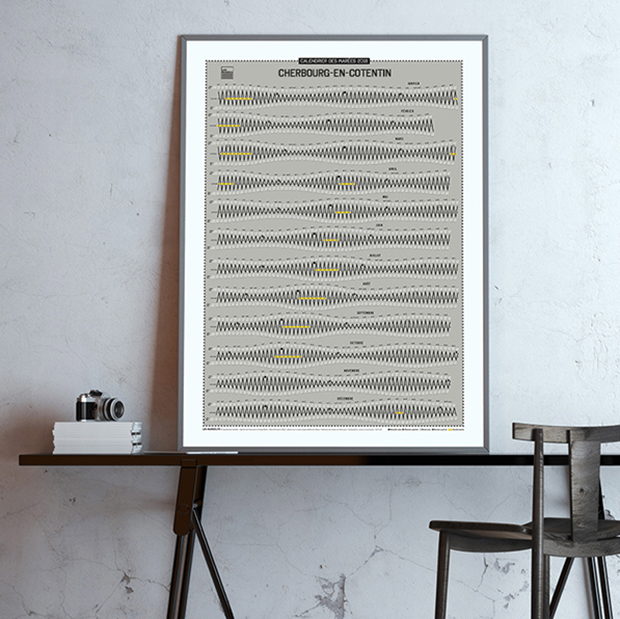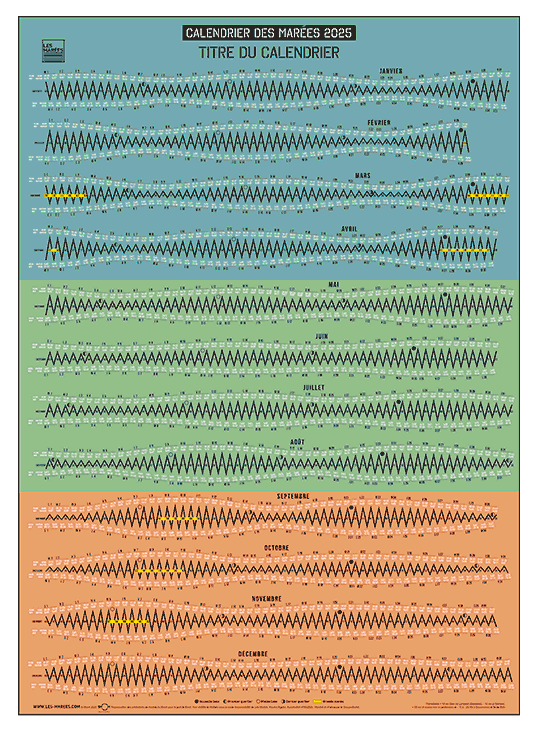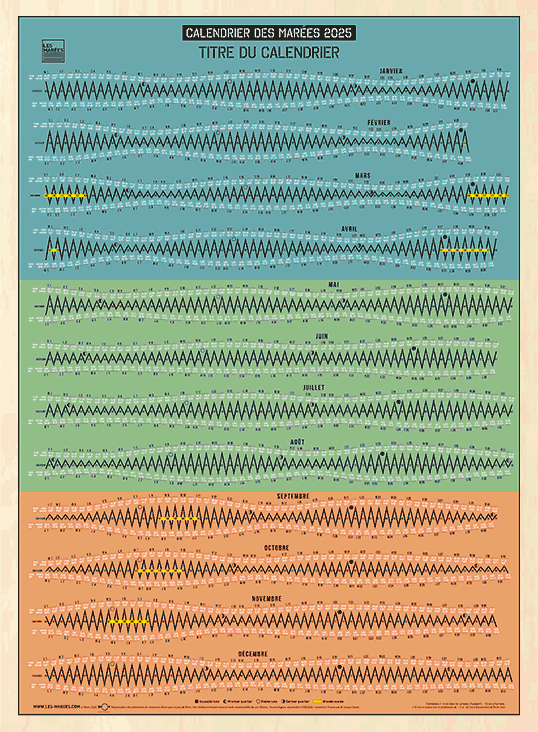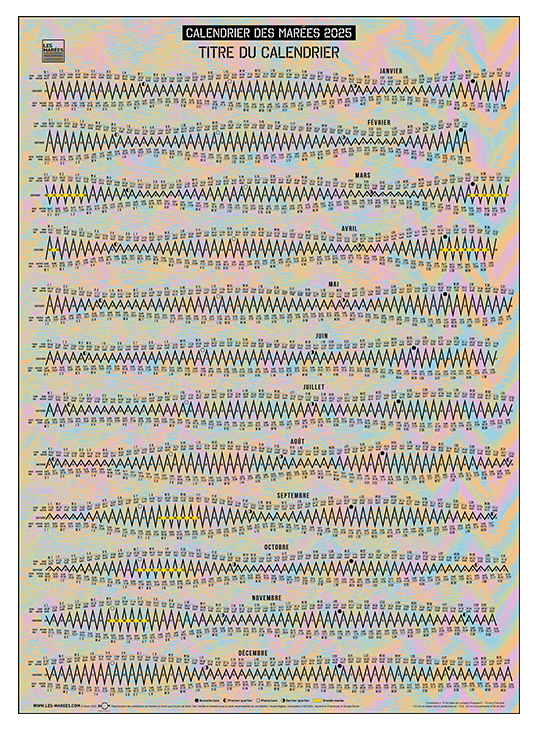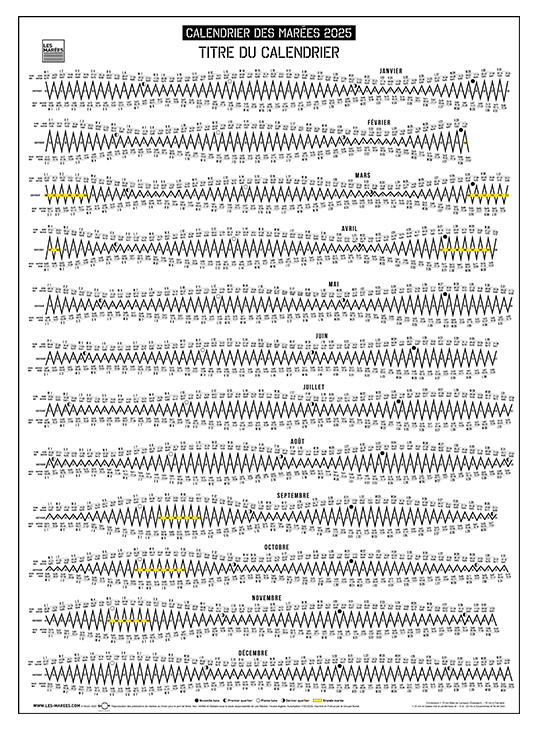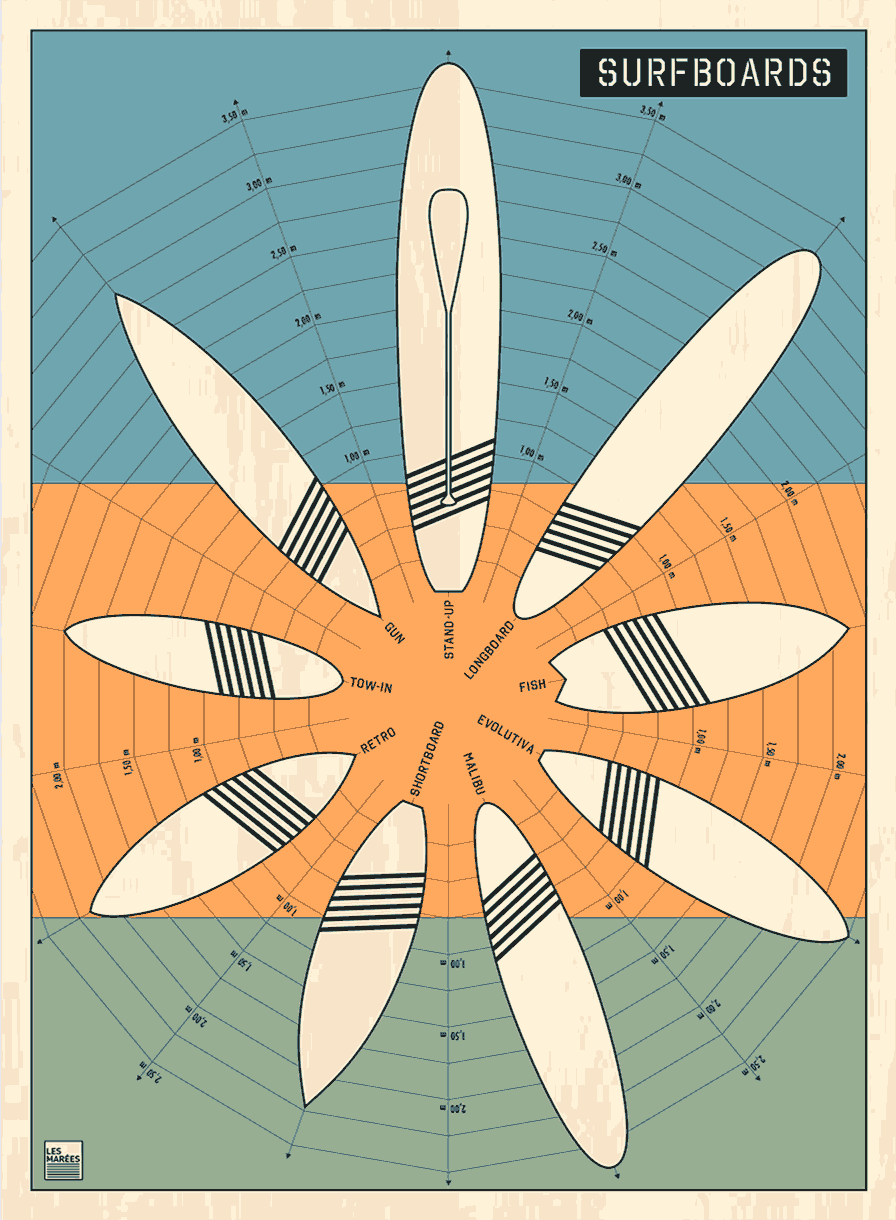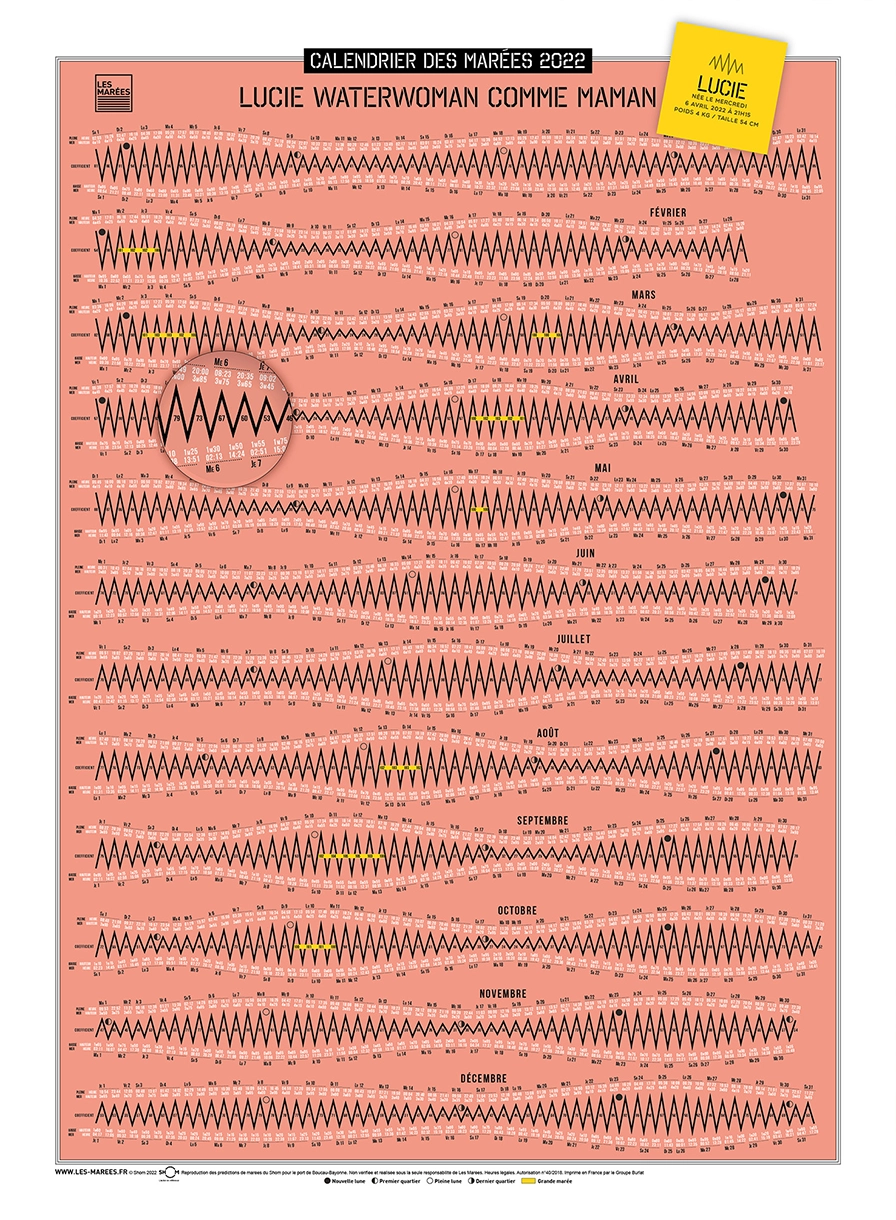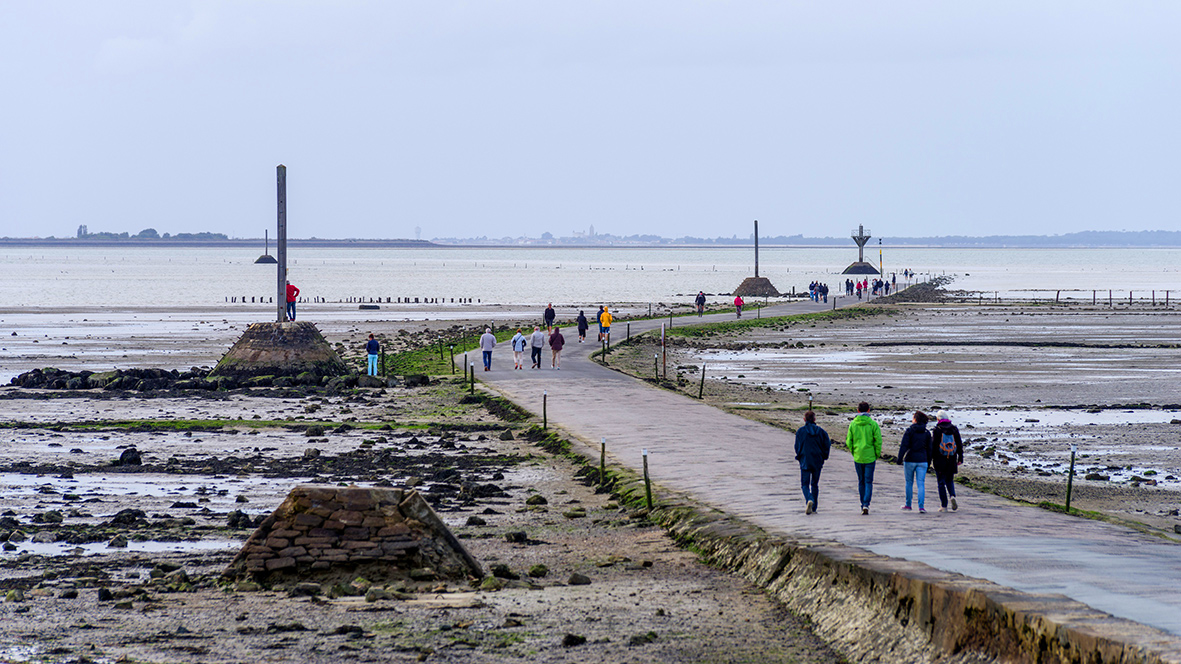
If you live near the coast, are planning a seaside getaway, or are looking at a tidal calendar, you’ve probably heard of the “tidal coefficient.” But what exactly is a tidal coefficient? How to read it? And what is a high tide coefficient?
We explain it to you simply and clearly.
What is a tidal coefficient?
Tide Basics
To fully understand the tidal coefficient, one must first have a clear idea of what a tide is.
In summary, it is the regular alternation of rise (flood) and descent (ebb) of the sea.
This phenomenon is mainly due to the attraction of the Moon and the Sun on the oceans.
You should know that the tide is not always the same, sometimes the water rises and falls a little (neap tide period), other times the water rises and falls much more in the same place (high water period).
The role of the tidal coefficient
The tidal coefficient is a number, between 20 and 120, which allows you to know clearly and simply the importance of the tide on a given day.
This means that the importance of the tide varies in proportions of 1 to 6 on the coasts.
The higher the coefficient, the greater the tidal range, means the greater the difference in level between high tide and low tide.
A high coefficient means a “large tide” while a low coefficient indicates a “small tide”.
It’s great because it’s simple and concrete, you can easily see the importance of the movement of the water!
The coefficient remains approximate because we can have the same coefficient for different high sea heights.
For a more detailed analysis, it is better to take heights into account.
Likewise, thanks to the coefficients, we can quickly identify the dates of high tides.
The coefficient table
20 – Neap waters 45 – Average neap waters
70 – Small spring tides 95 – Medium spring tides
100 and more – High tides 120 – Extraordinary equinox spring tides
The tidal coefficient, Franco-French information
The tidal coefficient only exists and is calculated for France.
You won’t find it anywhere else. It was invented by French hydrographers. SHOM calculates the tide coefficient for high seas in Brest.
We will not go into the details of the calculation which is a bit complex 😊 but mathematicians or enthusiasts will easily find this information on the SHOM website.
This Brest high seas coefficient applies to all other coastal tidal zones.
The coefficient is the same everywhere, but pay attention to the speed of propagation of the tidal wave, especially in the Channel! For example, at Dunkirk the high tide follows that of Brest with a more than 6 hour difference, so if the high tide occurs in Brest at 9 p.m., the corresponding coefficient will apply to the high tide the next day in Dunkirk. You follow me?
How to read a coefficient?
Interpreting the numbers
If you consult a tidal calendar, for example on the site “Les Marées”, you will see two tide coefficients for each day, one for each high tide (except when there is only one high tide during the day ). If the coefficient indicated is 110, expect a large amplitude between high tide and low tide. If, on the contrary, it is 30, the sea will not rise or fall much.
This is easily seen on the zoom of our curve. We can easily distinguish the spring water period from the neap water period and the respective coefficients at the center of the curve.
Our curves are proportional to the tidal coefficients.
Zoom d’une courbe de marée
We place the tidal coefficients in the middle of the monthly curve of the month’s predictions.
At the start of the curve the coefficients are greater than 100 for high seas.
We are in a period of high tides with the color yellow. The water rises and falls a lot, high tidal range, spring water.
Then the coefficients decrease in blue color to reach 31, neap tides, small tidal range, the water rises and falls little.
Our curve is narrowing.
The high tide coefficient
High tides on the coast, high tides correspond to a coefficient level. By convention, SHOM has decided that it is when the coefficient equals or exceeds 100. On these days, the beaches can be almost covered or, on the contrary, very extensive, revealing a wider foreshore with sometimes hidden treasures or places usually submerged.
On our curve above, high tides are highlighted using yellow bars.
They “pop out” on our large format tidal calendar, see at the bottom of the article.
There are spring tides several times a year but the strongest coefficients are at the time of the spring and autumn equinoxes.
Why is it important to know the coefficient?
For leisure and activities
If you like shore fishing, for example, a high coefficient will be ideal because it will discover a large part of the coastline.
On the other hand, if you are a surfer, wave conditions can be influenced by tidal coefficients, so keep an eye out!
Safety first
A high tide, combined with other factors such as wind, can cause powerful ocean currents or submerge normally safe areas.
It is therefore essential to know the coefficient to guarantee your safety and that of your loved ones.
You sometimes take your boat out easily at low tide when the coefficient is small and you may not be able to do so when the coefficient is above 100 during high tide.
Conversely, at high tide with a high coefficient you can find yourself stuck at the foot of the cliff whereas at a low coefficient the water will not rise that far.
For the beauty of the spectacle
A maritime landscape changes radically between a small and a large tide. Spring tides, especially during the highest coefficients, offer an impressive spectacle that many enjoy observing and photographing. It’s a highlight!
A precious tool to understand the sea
Tides are not just a fascinating natural phenomenon. They play a crucial role in marine life, influence our activities on the coast and shape our landscapes.
Understanding how to read a coefficient and knowing what it represents is therefore essential for anyone who loves, lives or works by the sea.
Our tidal calendar is graphically impactful and allows you to visualize the importance of the coefficients at a glance.
The designer, large-format tide calendar exists for more than 40 tide zones. format 60 x 80 cm or 50 x 70 cm printed on poster or directly on wood in 10 possible colors.
From the 2024 calendar, the big new thing is to be able to personalize the title of your calendar and tell your connection with the ocean.
We hope this article has enlightened you about the mysterious tidal coefficient. So, the next time someone talks to you about tidal coefficients, you will be the king or queen of the conversation!
- SHOM (service hydrographique et océanographique de la marine)
- Foreshore: strip of land covered at high tide and exposed at low tide. Source: Wikipedia.
- Image of the illustration: the Passage du Gois usable at low tide, covered at high tide. Also consult the day coefficients.

